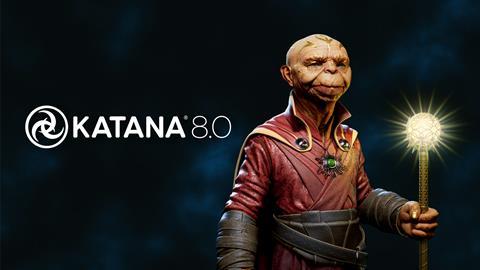Nuke 16.0 will allow users to have multishot workflows

Foundry has launched Katana 8.0 and Mari 7.1, as well as opened the Nuke 16.0 open beta.
Te new edition of Katana includes complete roundtripping to and from USD within the application. A new USD export feature means that all USD changes made in Katana can be exported for re-use in other departments, including lights and materials, cameras and other geometry.
What’s new in Katana 8.0
- Katana to USD: Artists can now convert Katana data to native USD data with a new KatanaToUsd node.
- USD Export: All USD changes made in Katana can be exported for re-use in other departments.
- UsdLight Node: Artists are able to create lights in Katana on a USD stage.
- Pattern-based Collections: Collections (and the new-to-USD Pattern-based Collections feature) will be added to Katana’s USD space.
- Scene Explorer Collections: Collections are now supported in the Scene Explorer tab for both Geolib and USD using a new Collections panel.
- USD Debugging Tools: A USD Text View tab keeps artists and TDs more informed on what’s happening on the USD stage
- Performance tab: Python Profiler: The Performance tab now has a Python Profiler section, with an interface for collecting and displaying Python profiling data.
- Performance Improvement: Traversal Optimization: Scenes now load up to 2.5x faster when compared with Katana 7.0, thanks to Katana’s Node Graph traversal process being ported over from Python to C++.
- USD in Hydra Improvements: USD prims, including new locators for lights and cameras, can now be manipulated in the Hydra viewer.
- VFX Reference Platform 2024: Benefit from the features of Katana 8.0 with the updated VFX Reference Platform 2024 (Katana 7.5 is also shipping and has the same feature set and sits on VFX Reference Platform 2023).
Meanwhile, Mari has added a 2D painting mode, which allows artists to switch between 2D and 3D painting, or create images on a canvas in 2D and then have a live link between that and their nodegraph in 3D. Artists can also curate their own modular Smart Mask library, with over 50 Smart Masks and utility nodes from industry professional Stuart Ansley, as well as Johnny Fehr’s grunge maps.
What’s new in Mari 7.1
- 2D Painting Mode: Paint a 2D image with full Node Graph or Layer support to create decals or make edits for use in your texturing projects.
- Smart Mask Shelf: More ready-made presets with a revamped Smart Mask Shelf and over 50 Smart Masks and utility nodes designed by industry professional Stuart Ansley.
- Grunge Shelf: 60+ new grunge textures from texture artist Johnny Fehr were added last year and now more have been introduced.
- Paint Node Creation Presets: Select from a batch of pre-selected swatches regularly used by artists or add your own swatches to the new Color Presets Shelf in the Paint Node creation list.
- Switch Node: Export your material with different network variations, quickly switching between different looks by changing the input from the Switch Node’s Properties.
- Save Nodes to Shelf items: Node Packages bundle up the Node Network, along with any source images, into a single file, for portability of premade Node Graphs between artists.
- Backdrop Nodes: Click anywhere within a Backdrop node to select the node and others contained within that area.
Nuke 16.0 goes into open beta, and will allow users to use multishot workflows, aiming to help with repetitive tasks such as copy and pasting nodes, recreating changes, and keeping track of edits across multiple scripts.
What’s new in the Nuke 16.0 open beta
- Overhauled compositing workflows: Variables, Link nodes, Group Node internal view, and roto performance improvements when working with large scripts.
- Enhanced review workflows: Timeline improvements including multichannel soft effects, and Quick Export.
- More seamless 3D workflows: Updates to the beta 3D system including improved core nodes, new GeoConstrain and GeoXformPrim nodes, and UI updates.
- Updates to BlinkScript: Custom effect creation with updates to the BlinkScript node that aim to make it easier to read, write, and troubleshoot code.
Christy Anzelmo, Foundry’s chief product officer, said: “In the current production environment, it’s crucial for artists and teams to work as smoothly and efficiently as possible. Across Foundry’s portfolio, we’ve been working to enable artists to focus on creating the best work possible, at scale, with fewer custom workarounds or roundtrips to other applications. The introduction of 2D painting in Mari, native USD roundtripping from Katana and the upcoming multishot compositing in Nuke deliver new efficiencies that artists and pipelines can take advantage of today. We can’t wait to see these tools in the hands of artists.”
This article has been amended. Originally Nuke 16.0’s features included a new ML Planar Tracker and Contact Sheet.





No comments yet